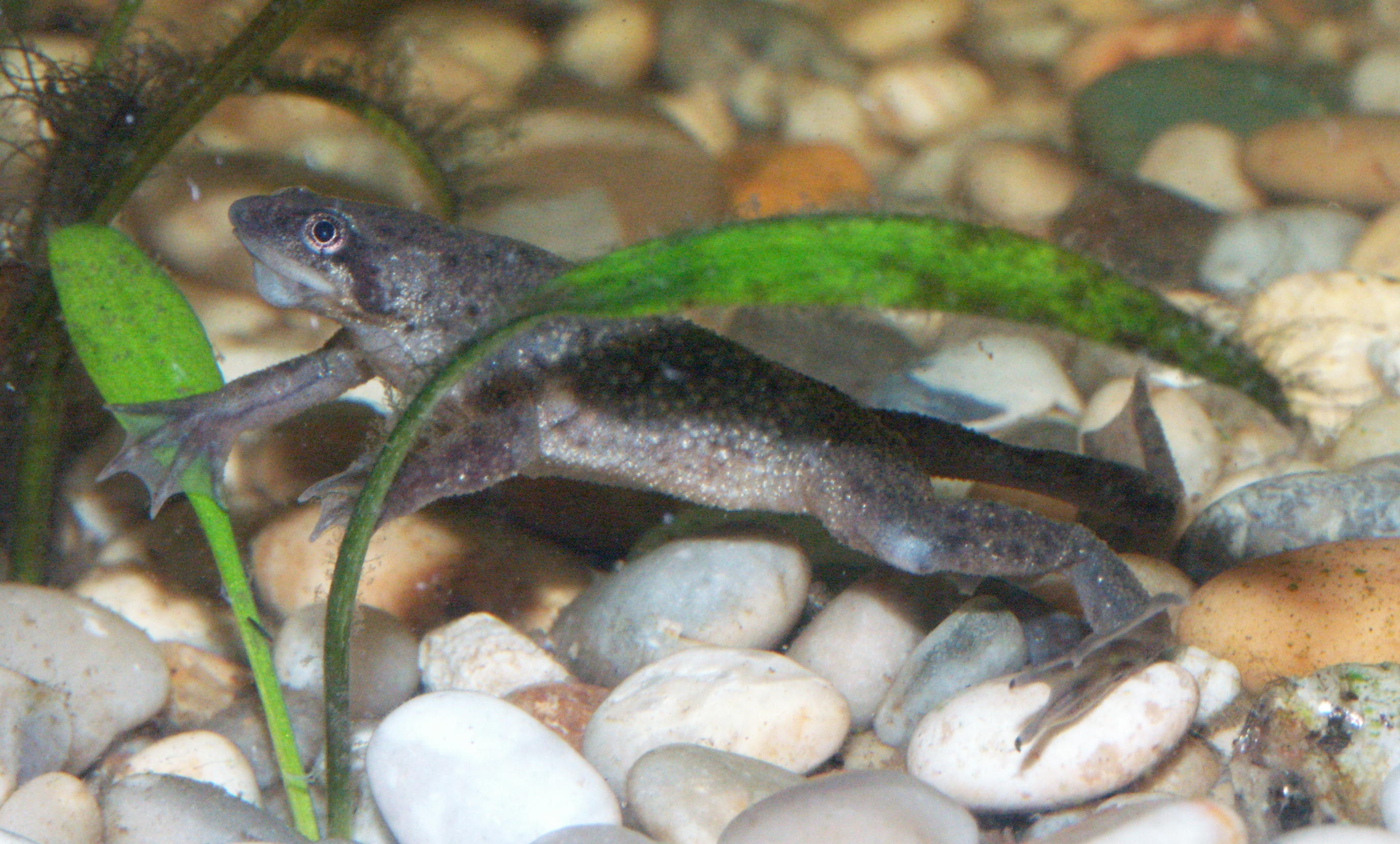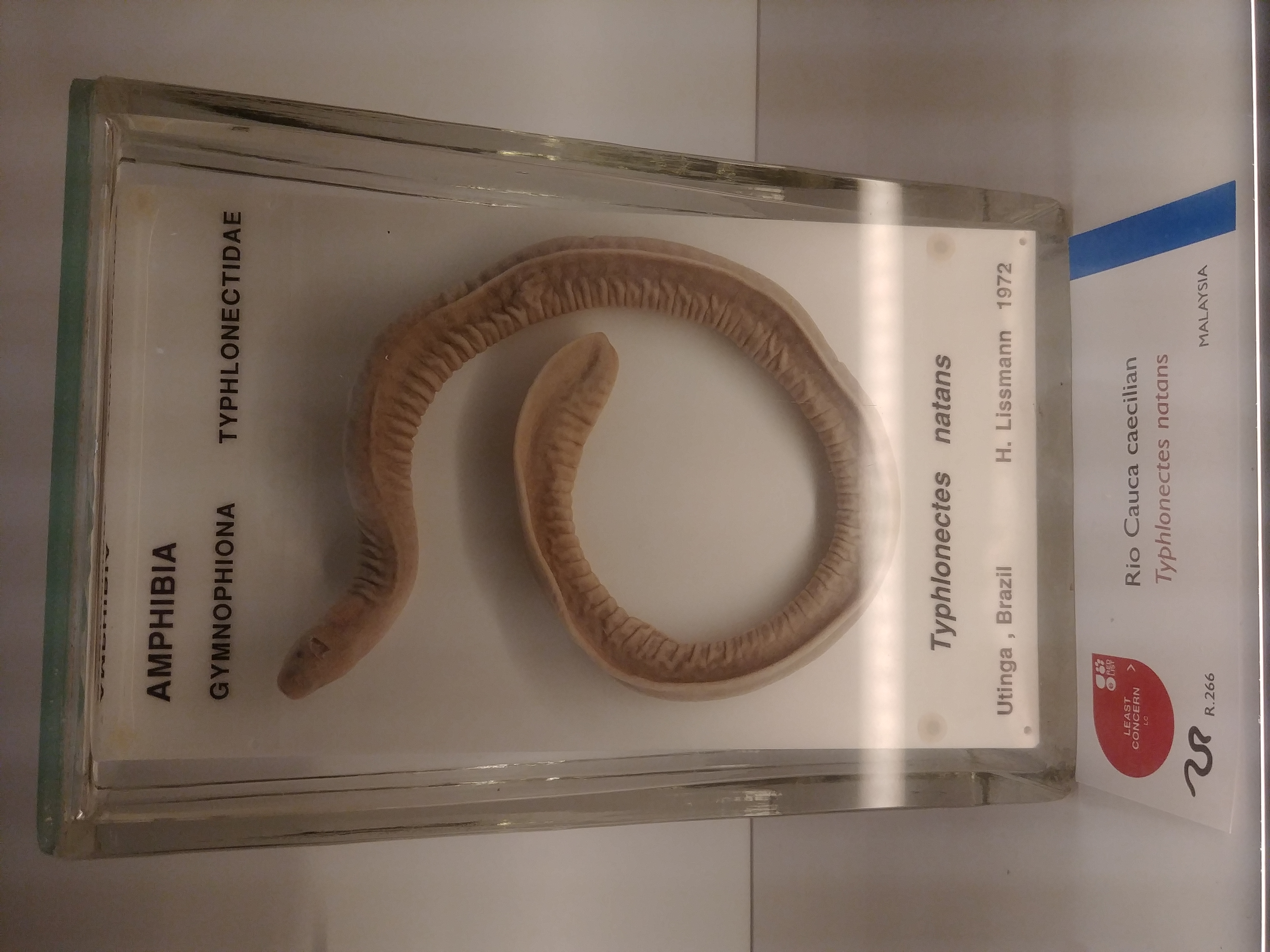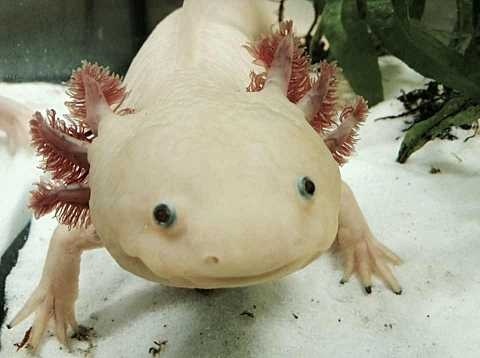|
List Of Freshwater Aquarium Amphibian Species
There are a wide range of frogs, salamanders and newts that can be kept in an aquarium. Aquatic frogs * African dwarf frog - ''Hymenochirus boettgeri'' or ''Hymenochirus curtipes'' *African clawed frog - ''Xenopus laevis'' * Indonesian Floating Frog - '' Occidozyga lima'' *Western clawed frog - ''Xenopus tropicalis'' * Surinam toad - Pipa pipa Newts * Paddle-Tail Newt * Fire Belly Newt * Spotted Paddle-Tail Newt Salamanders *Mole salamander **Axolotl *Siren *Mudpuppy * Amphiuma *Hellbender (Cryptobranchus alleganiensis) *Giant salamander The Cryptobranchidae are a family of fully aquatic salamanders commonly known as the giant salamanders. They include the largest living amphibians. The family is native to China, Japan, and the eastern United States. They constitute one of two ... (Cryptobranchidae) Caecilians * Cayenne caecilian * Rubber eel References {{DEFAULTSORT:Freshwater aquarium amphibian species freshwater freshwater amphibian ... [...More Info...] [...Related Items...] OR: [Wikipedia] [Google] [Baidu] |
African Dwarf Frog
The African dwarf frog is a genus of aquatic frog native to parts of Equatorial Africa. It is common in the pet trade and is often mistaken for the African clawed frog, a similar-looking frog in the same family. African dwarf frogs (''Hymenochirus'') are also known as dwarf clawed frogs. Their common name is obtained from their place of origin and the claws on their hind legs. Distribution African dwarf frogs occur in forested parts of equatorial Africa, from Nigeria and Cameroon in the north, and south through Gabon and east throughout the Congo River Basin. Species There are four species: * Zaire dwarf clawed frog, '' Hymenochirus boettgeri'' Tornier, 1896 * Eastern dwarf clawed frog, '' Hymenochirus boulengeri'' De Witte, 1930 * Western dwarf clawed frog, '' Hymenochirus curtipes'' Noble, 1924 * Gaboon dwarf clawed frog, '' Hymenochirus feae'' Boulenger, 1906 Description African dwarf frogs live their entire lives underwater, but need to rise to the surface to breathe air as ... [...More Info...] [...Related Items...] OR: [Wikipedia] [Google] [Baidu] |
Siren (genus)
''Siren'' is a genus of aquatic salamanders of the family Sirenidae. The genus consists of three living species, along with one extinct species from the Eocene Epoch and three from the Miocene. The living species have elongated, eel-like bodies, with two small vestigial fore legs. Species Extant (living) species include: *''Siren intermedia'' Barnes, 1826 – lesser siren *''Siren lacertina'' Linnaeus, 1766 – greater siren *''Siren reticulata'' Graham, Kline, Steen & Kelehear, 2018 – reticulated siren or leopard eel Extinct species: *†''Siren dunni'' Goin & Auffenberg, 1957 *†''Siren hesterna'' Herre, 1955 *†''Siren miotexana'' Holman, 1977 *†''Siren simpsoni'' Herre, 1955 Siren intermedia nettingi UMFS 2015 1.JPG, ''Siren intermedia nettingi'',western lesser siren Siren_Lacertina_Skeleton_(2).jpg, '' Siren lacertina'', greater siren, skeleton See also *''Pseudobranchus'', dwarf siren Dwarf sirens are eel-like salamanders of the genus ''Pseudobranchus' ... [...More Info...] [...Related Items...] OR: [Wikipedia] [Google] [Baidu] |
Rubber Eel
''Typhlonectes natans'', also incorrectly called the rubber eel, is a species of caecilian in the family Typhlonectidae found in Colombia, Venezuela, and possibly Trinidad and Tobago. Its natural habitats are dry savanna, subtropical or tropical dry shrubland, subtropical or tropical moist shrubland, subtropical or tropical seasonally wet or flooded lowland grassland, and rivers. The ''T. natans'' is commonly kept as an aquarium pet, and is sometimes sold as a "fish" in aquarium stores. A specimen of ''T. natans'' was found in October 2019 in Miami-Dade County, Florida, making it the first caecilian to be collected in North America. They grow to in length. They are dark grey to black in color. While ''T. natans'' can and occasionally does breathe air at the surface, most of its respiration takes place through its skin. The species is ovoviviparous Ovoviviparity, ovovivipary, ovivipary, or aplacental viviparity is a term used as a "bridging" form of reproduction between e ... [...More Info...] [...Related Items...] OR: [Wikipedia] [Google] [Baidu] |
Cayenne Caecilian
''Typhlonectes compressicauda'', the Cayenne caecilian, is a species of amphibian in the family Typhlonectidae that lives in water. It is found in Amazonian Brazil, Peru, and Colombia as well as in Guyana and French Guiana, and likely Suriname, and according to some sources, Venezuela. It is an aquatic caecilian that inhabits permanent rivers and marshes mainly in the lowland forest zone. Description The Cayenne caecilian is an elongated, dark grey, black or steely blue amphibian with no limbs. The body is flattened laterally and has a number of transverse folds, giving it a segmented appearance. A long fin runs along its back, and it grows to a length of . It has a more highly derived morphology than some more primitive species, showing differences in lung structure, the reproductive organs, and the kidneys. Distribution The Cayenne caecilian occurs in South America, including the Amazon basin and river systems in the Guianas. It is found at altitudes of up to above sea level. ... [...More Info...] [...Related Items...] OR: [Wikipedia] [Google] [Baidu] |
Giant Salamander
The Cryptobranchidae are a family of fully aquatic salamanders commonly known as the giant salamanders. They include the largest living amphibians. The family is native to China, Japan, and the eastern United States. They constitute one of two living families within the Cryptobranchoidea, one of two main divisions of living salamanders, the other being the Asiatic salamanders belonging to the family Hynobiidae. The largest species are in the genus ''Andrias,'' native to east Asia''.'' The South China giant salamander (''Andrias sligoi''), can reach a length of .Andrias davidianus AmphibiaWeb: Information on amphibian biology and conservation. 2012. Berkeley, California: AmphibiaWeb. Retrieved 13 December 2012. The |
Hellbender
The hellbender (''Cryptobranchus alleganiensis''), also known as the hellbender salamander, is a species of aquatic giant salamander endemic to the eastern and central United States. It is the largest salamander in North America. A member of the family Cryptobranchidae, the hellbender is the only extant member of the genus ''Cryptobranchus''. Other closely related salamanders in the same family are in the genus ''Andrias'', which contains the Japanese and Chinese giant salamanders. The hellbender, which is much larger than all other salamanders in its geographic range, employs an unusual means of respiration (which involves cutaneous gas exchange through capillaries found in its dorsoventral skin folds), and fills a particular niche—both as a predator and prey—in its ecosystem, which either it or its ancestors have occupied for around 65 million years. The species is listed as Vulnerable on the IUCN Red List of Threatened Species. Etymology The origin of the name "hellben ... [...More Info...] [...Related Items...] OR: [Wikipedia] [Google] [Baidu] |
Amphiuma
''Amphiuma'' is a genus of aquatic salamanders from the United States, the only extant genus within the family Amphiumidae . They are colloquially known as amphiumas. They are also known to fishermen as "conger eels" or "Congo snakes", which are zoologically incorrect designations or misnomers, since amphiumas are actually salamanders (and thus amphibians), and not fish, nor reptiles and are not from Congo. ''Amphiuma'' exhibits one of the largest complements of DNA in the living world, around 25 times more than a human. Taxonomy Numerous phylogenetic studies have indicated that amphiumas form a clade with the families Rhyacotritonidae (torrent salamanders) and Plethodontidae (lungless salamanders), with an especially close relationship to Plethodontidae. Despite this possible relationship, the two families must have still diverged very early on. The genus ''Proamphiuma'' from the Cretaceous is the earliest known member of the family, and closely resembles the modern species ... [...More Info...] [...Related Items...] OR: [Wikipedia] [Google] [Baidu] |
Mudpuppy
''Necturus'' is a genus of aquatic salamanders native to the eastern United States and Canada. They are commonly known as waterdogs and mudpuppies. The common mudpuppy ''(N. maculosus)'' is probably the best-known species – as an amphibian with gill slits, it is often dissected in comparative anatomy classes. Taxonomy The genus is under scrutiny by herpetologists. The relationship between the species is still being studied. In 1991 Collins elevated ''N. maculosus louisianensis'' to full species status, usually considered a subspecies of the common mudpuppy (''N. maculosus''), but his interpretation was not largely followed.Petranka, J.W. (1998). Salamanders of the United States and Canada. Smithsonian Institution Press . However, a 2018 study confirmed it as a distinct species, with Amphibian Species of the World following these results, although other authorities do not.'''' Species There are seven to eight species: Two known fossil species, '' N. krausei'' and an unnam ... [...More Info...] [...Related Items...] OR: [Wikipedia] [Google] [Baidu] |
Axolotl
The axolotl (; from nci, āxōlōtl ), ''Ambystoma mexicanum'', is a paedomorphic salamander closely related to the tiger salamander. Axolotls are unusual among amphibians in that they reach adulthood without undergoing metamorphosis. Instead of taking to the land, adults remain aquatic and gilled. The species was originally found in several lakes underlying what is now Mexico City, such as Lake Xochimilco and Lake Chalco. These lakes were drained by Spanish settlers after the conquest of the Aztec Empire, leading to the destruction of much of the axolotl’s natural habitat. Axolotls should not be confused with the larval stage of the closely related tiger salamander (''A. tigrinum''), which are widespread in much of North America and occasionally become paedomorphic. Neither should they be confused with mudpuppies (''Necturus'' spp.), fully aquatic salamanders from a different family that are not closely related to the axolotl but bear a superficial resemblance. , wild ax ... [...More Info...] [...Related Items...] OR: [Wikipedia] [Google] [Baidu] |
African Clawed Frog
The African clawed frog (''Xenopus laevis'', also known as the xenopus, African clawed toad, African claw-toed frog or the ''platanna'') is a species of African aquatic frog of the family Pipidae. Its name is derived from the three short claws on each hind foot, which it uses to tear apart its food. The word ''Xenopus'' means 'strange foot' and ''laevis'' means 'smooth'. The species is found throughout much of Sub-Saharan Africa (Nigeria and Sudan to South Africa),Weldon; du Preez; Hyatt; Muller; and Speare (2004). Origin of the Amphibian Chytrid Fungus.' Emerging Infectious Diseases 10(12). and in isolated, introduced populations in North America, South America, Europe, and Asia. All species of the family Pipidae are tongueless, toothless and completely aquatic. They use their hands to shove food in their mouths and down their throats and a hyobranchial pump to draw or suck things in their mouth. Pipidae have powerful legs for swimming and lunging after food. They also use the ... [...More Info...] [...Related Items...] OR: [Wikipedia] [Google] [Baidu] |
Mole Salamander
The mole salamanders (genus ''Ambystoma'') are a group of advanced salamanders endemic to North America. The group has become famous due to the presence of the axolotl (''A. mexicanum''), widely used in research due to its paedomorphosis, and the tiger salamander (''A. tigrinum, A. mavortium'') which is the official amphibian of many states, and often sold as a pet. General description Terrestrial mole salamanders are identified by having wide, protruding eyes, prominent costal grooves, and thick arms. Most have vivid patterning on dark backgrounds, with marks ranging from deep blue spots to large yellow bars depending on the species. Terrestrial adults spend most of their lives underground in burrows, either of their own making or abandoned by other animals. Some northern species may hibernate in these burrows throughout the winter. They live alone and feed on any available invertebrate. Adults spend little time in the water, only returning to the ponds of their birth to br ... [...More Info...] [...Related Items...] OR: [Wikipedia] [Google] [Baidu] |
Spotted Paddle-Tail Newt
The spotted paddle-tail newt (''Pachytriton brevipes'') is an amphibian native to southeastern China; it was named in 1876. A member of the family Salamandridae, it is closely related to the spotless paddle-tail newt (''Pachytriton labiatus''). The spotted paddle-tail newt lives in streams and is characterized by its long, paddle-shaped tail used for propulsion. Description ''Pachytriton'' species are stout-bodied, smooth-skinned aquatic newts. Their heads are large and flattened, and they have conspicuous labial folds and short, stubby legs and toes. They breathe through both lungs and skin. ''P. brevipes'' ranges from 5.5 to 7.5 in as an adult. It has prominent labial folds, long digits, and smooth skin, which differs from the tuberculate skin typical of newts. The head, back, and tail of ''P. brevipes'' range in color from light brown to a dark chocolate brown and are covered in dark spots. The underbelly color varies considerably, from a very light brown to a solid bl ... [...More Info...] [...Related Items...] OR: [Wikipedia] [Google] [Baidu] |






